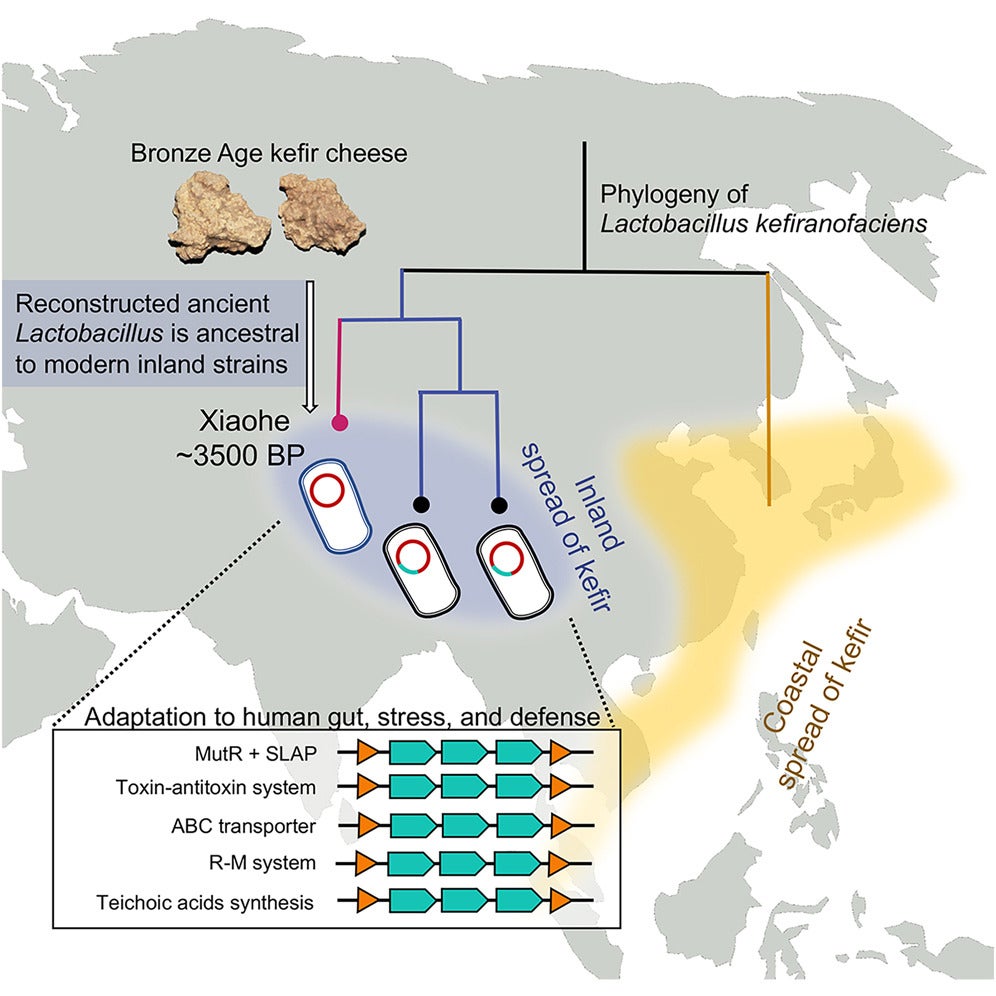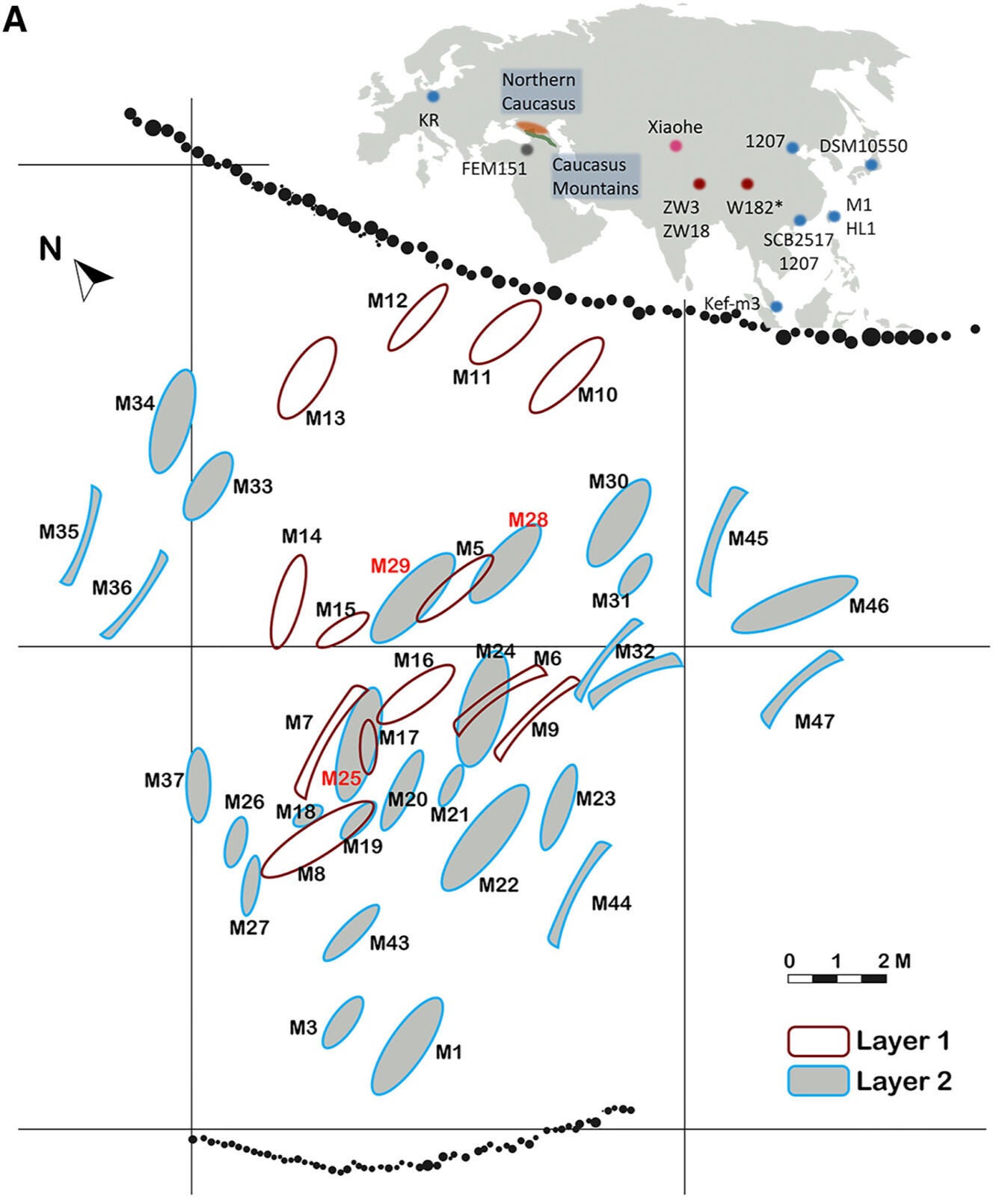Fermented foods have played a profound role in human history, shaping diets and health for millennia. Among these, fermented dairy products, rich in probiotics and organic compounds, stand out for their nutritional and cultural significance.
New scientific breakthroughs have unearthed remarkable insights into one of the earliest examples of such products—kefir cheese—dating back over 3,500 years. By studying these ancient remains, researchers are uncovering the evolution of microbial interactions and human culture, offering a glimpse into the complexities of our ancestors’ lives.
Fermentation has long allowed humans to manipulate their gut microbiota by consuming foods teeming with microorganisms. Fermented foods, such as kefir, are believed to contain microbial populations up to 10,000 times greater than fresh food.
These microorganisms, including various Lactobacillus species like Lactobacillus acidophilus, contribute to gut health by producing compounds such as peptidoglycans and cell wall polysaccharides. These substances enhance immunity, reduce inflammation, and lower infection risks.

While fermented dairy’s history spans thousands of years, pinpointing the evolution of its techniques and microbial composition has proven challenging. Archaeological records are scarce, and dairy remnants degrade quickly, complicating efforts to reconstruct this cultural evolution.
Yet, DNA evidence from ancient cheese offers new avenues to unravel the past. By analyzing preserved kefir cheese samples, scientists can trace the domestication of milk-producing animals, the spread of fermentation techniques, and the co-evolution of microbes and their human hosts.
Recent discoveries in the Xiaohe cemetery of China’s Tarim Basin have provided exceptional insights. Archaeologists unearthed white substances on mummies dating back to the Bronze Age, approximately 3,600 years ago. These substances, initially suspected to be fermented dairy, were later confirmed as kefir cheese following advanced DNA analysis.
“This is the oldest known cheese sample ever discovered,” explains Qiaomei Fu, a researcher at the Chinese Academy of Sciences. “Food items like cheese are extremely difficult to preserve over thousands of years, making this a rare and valuable opportunity. Studying the ancient cheese in great detail can help us better understand our ancestors’ diet and culture.”
Related Stories
The research team successfully extracted mitochondrial DNA from the samples, identifying cow and goat milk as the primary ingredients. Interestingly, the Xiaohe people used separate batches of milk, a practice differing from the common Middle Eastern and Greek technique of mixing different types. The cheese also contained bacterial and fungal species, including Lactobacillus kefiranofaciens and Pichia kudriavzevii, central to modern kefir grains.
Kefir grains are symbiotic cultures of bacteria and yeast, encapsulated in a polysaccharide matrix, used to ferment milk into kefir cheese. This process mirrors sourdough starter fermentation, highlighting an ancient innovation still relevant today.
Kefir has long been associated with the North Caucasus region, where it is believed to have originated. However, the DNA analysis from the Xiaohe samples suggests an additional cultural diffusion route.
Kefir production may have spread from Xinjiang, China, to inland East Asia, challenging the prevailing belief that it originated solely in the Caucasus. The strains of Lactobacillus kefiranofaciens found in the ancient cheese more closely resemble modern Tibetan strains than the Russian strains commonly used globally today.

“Our observation suggests kefir culture has been maintained in Northwestern China’s Xinjiang region since the Bronze Age,” Fu notes. This discovery reshapes our understanding of kefir’s geographic and cultural history.
The study, published in the journal, Cell, also highlights microbial adaptations. Ancient strains of Lactobacillus exhibited genetic features enhancing their resilience to environmental stressors. Over thousands of years, these microbes exchanged genetic material with related strains, improving their stability and fermentation efficiency.
Modern strains have become less likely to trigger immune responses in human intestines, underscoring a gradual adaptation to human hosts through prolonged interactions. The ability to sequence bacterial DNA from ancient food provides a unique window into microbial and human co-evolution.
Fu’s team not only demonstrated how probiotic bacteria evolved but also illuminated the daily lives and dietary practices of ancient populations.
“This is an unprecedented study, allowing us to observe how a bacterium evolved over the past 3,000 years,” Fu remarks. “By examining dairy products, we’ve gained a clearer picture of ancient human life and their interactions with the world.”
Moreover, the research sheds light on cultural exchanges and the evolution of dietary practices across regions. It also highlights the potential of modern technology to explore previously inaccessible aspects of human history.
By understanding ancient microbial ecosystems, scientists can better appreciate the intricate relationships between humans, their food, and the microorganisms they rely upon.
As more advancements in DNA technology emerge, researchers hope to extend their studies to other ancient artifacts. Such work promises to deepen our understanding of how humans have shaped—and been shaped by—the microbial world.
Note: Materials provided above by The Brighter Side of News. Content may be edited for style and length.
Like these kind of feel good stories? Get The Brighter Side of News’ newsletter.
The post Historic study reveals origins of world’s oldest cheese, kefir appeared first on The Brighter Side of News.